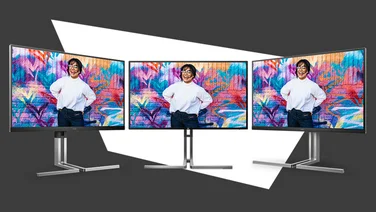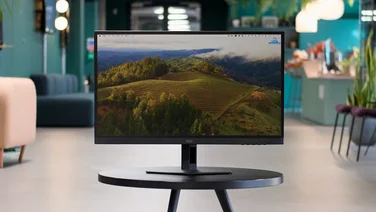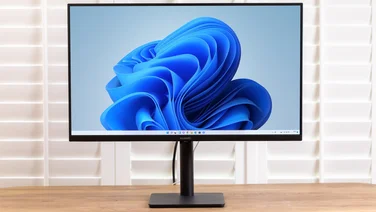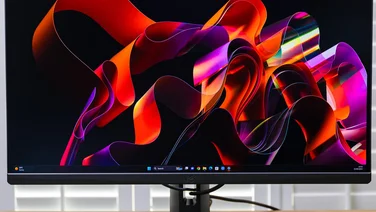To help us provide you with free impartial advice, we may earn a commission if you buy through links on our site. Learn more



Although this 23in Full HD (1,920×1,080) monitor is a budget model, it still has an IPS panel and supports Mobile High Definition Link (MHL). This technology lets you connect your smartphone or tablet to send video and pictures, while simultaneously charging your mobile device.
To use MHL, you must connect your mobile device to the 237E4QHAD’s supporting HDMI port. We connected the HTC One S to the 237E4QHAD and were pleased to see the Android home screen displayed on it. It appeared as a slim strip in the middle of the screen, but displayed full screen video when we played it. Although the number of smartphones and tablets that support MHL is relatively slim, it’s still useful to have it.

The other video inputs are a VGA and regular HDMI input. It’s a slight shame that there’s no DVI input, although DVI-to-HDMI adaptors are cheap if your PC doesn’t have a dedicated HDMI output. We’re pleased to see both an audio input and a headphone jack, as this gives PC users and gamers a good degree of flexibility.
The 237E4QHAD has a smart, glossy bezel, but its thin, lightweight frame makes it feel quite cheap and flimsy, and a small tap makes it rock rather precariously on its stand. Its 2W speakers are a handy feature, but they sound rather tinny and lack bass.

Our biggest disappointment with the 237E4QHAD, is its image quality. With an IPS panel, it should have more accurate colours than older and cheaper monitors with TN panels, but our colour calibrator only measured a measly 90.4 per cent of sRGB colour gamut reading straight out of the box. We tried increasing this result with a full calibration, but despite our best efforts we couldn’t improve on this.
Our solid colour tests fared slightly better, but while blues and reds were bright and vivid, whites appeared slightly grey. Greens looked slightly washed out as well, and blacks soon turned blueish toward the bottom of the screen.
Its contrast levels were also not as good as we would have liked. Primary colours were punchy on our set of test photos, but the darker areas of each photo had less detail compared to better displays, making this a poor screen for fine photo editing.
The 237E4QHAD has touch-sensitive controls to adjust the brightness, contrast and individual colour values to try and remedy this, but their lack of precision made them quite fiddly to operate, and altering individual RGB levels proved particularly frustrating as we frequently over and undershot our intended targets. Its viewing angles, on the other hand, were much more impressive, and we had to be almost side-on before we noticed any darkening of the screen.
MHL support is nice to have, but it’s not enough to make the 237E4QHAD stand out from the crowd. The 237E4QHAD comes at a good price, but the AOC i2352Vh is cheaper, has better image quality and is a much better buy.







